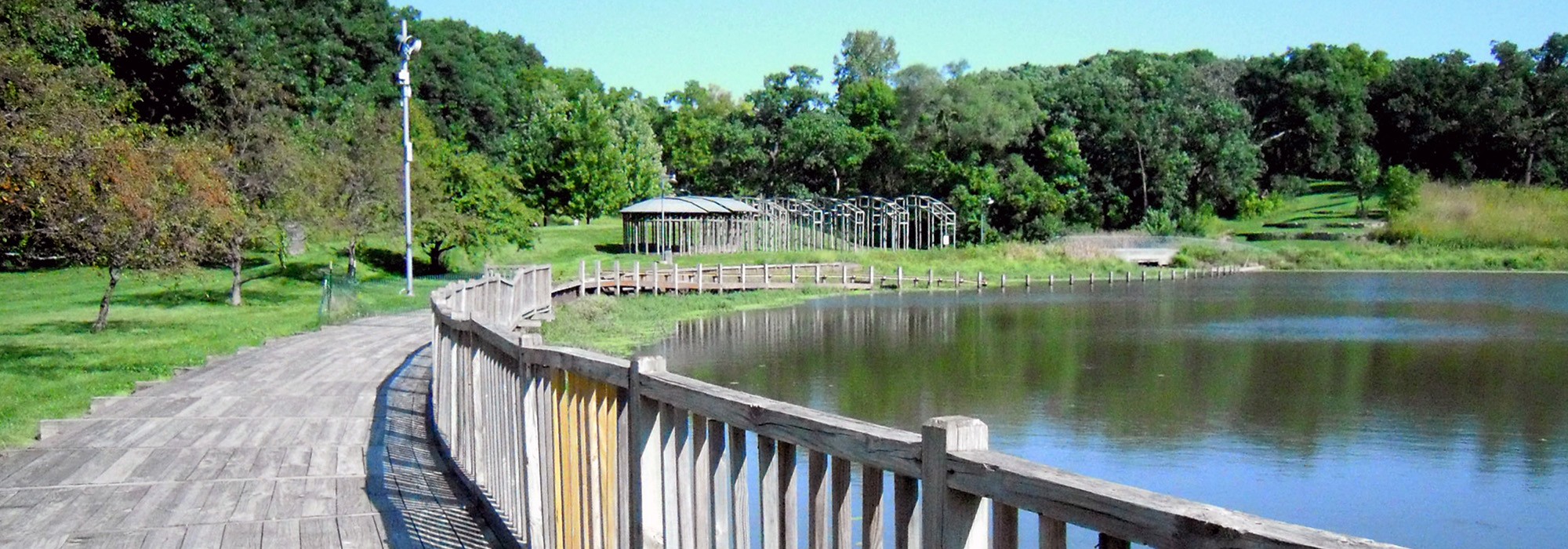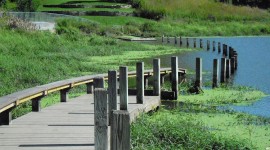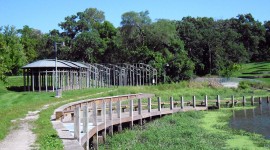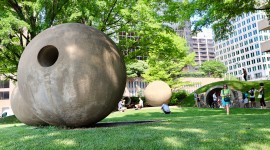Fifty letters and counting in support of "Greenwood Pond: Double Site"
The letters – 50 to date – to Des Moines Art Center (DMAC) Director Kelly Baum calling for a halt to the proposed demolition of Mary Miss’ acclaimed land art sculpture Greenwood Pond: Double Site continue to come in. They are not only impassioned, heartfelt, and compelling, they also buttress, and have been introduced as evidence in, Miss’ lawsuit against the DMAC for breach of contract and violation of the Visual Artists Rights Act. The three most recent, from art experts with a great depth of knowledge about women artists and the land art movement, are especially insightful and offer important context.
Nancy Clare Caponi, an art scholar who did her Master’s thesis about Greenwood Pond: Double Site while at the University of California, Santa Barbara, wrote: “Greenwood Pond was a polluted, neglected urban brownfield site for decades. Mary Miss skillfully collaborated with the museum, Science Center, community garden groups and city of Des Moines to remove toxic debris from the lagoon and begin the slow process of reclaiming this precious urban wetland site. In consultation with the community, Miss designed beautiful sculptural elements to encircle the pond, with pathways, benches, a shelter and a lookout tower for visitors to experience nature from various vantage points, for the benefit of all.” She added: “My husband and I visit Double Site every year, and we enjoy seeing the beauty of the changing seasons, highlighted by the sculptural elements.”
Jana La Brasca, a researcher and doctoral candidate in art history at the University of Texas at Austin, who also assisted Nasher Sculpture Center Curator Leigh Arnold on the exhibition and book Groundswell: Women of Land Art, wrote: “In the process of researching that exhibition, Curator Leigh Arnold and I encountered far too many accounts of land and public artworks, commissioned with the promise of permanence, that have been cared for in less-than-ideal ways, ranging from banal neglect to willful destruction. From our project’s perspective, the issue seemed especially acute in cases of projects by women artists.” She concluded: “the DMAC has an opportunity here to expand and continue to deliver on Miss’s original idea of the demonstration wetland as a site of social and ecological engagement. The institution also has an opportunity to collaborate with the artist, who is as vital and visionary as ever. Current and future generations of artists and scholars are watching: how will the DMAC lead in forging sustainable, conscientious, and above all, creative solutions to the environmental, social, and artistic issues that Miss’s project so eloquently highlights?”
Suzaan Boettger wrote: “As an art historian and professor, I taught about this work every semester in both introductory surveys and specialized classes on contemporary art.” And she was emphatic in her conclusion: “It should be obvious that destroying Greenwood Pond: Double Site – an act art historically, socially and institutionally obtuse – will damage the reputation of both the Des Moines Art Center and its leadership. Instead, rally local corporations and patrons to the necessity to fund its restoration and maintenance in perpetuity.”
As of May 3, a preliminary injunction is in place and Greenwood Pond: Double Site remains. Therefore, the litigation continues and another trial date will be set. Meanwhile, more letters are expected.









